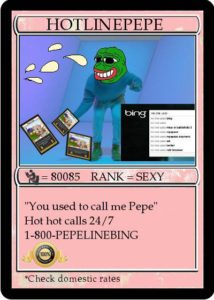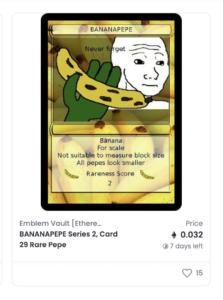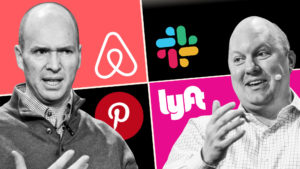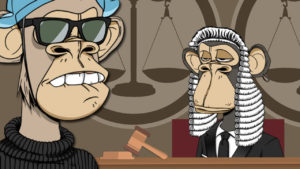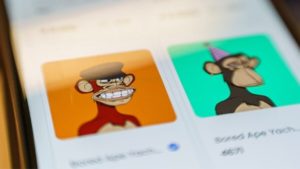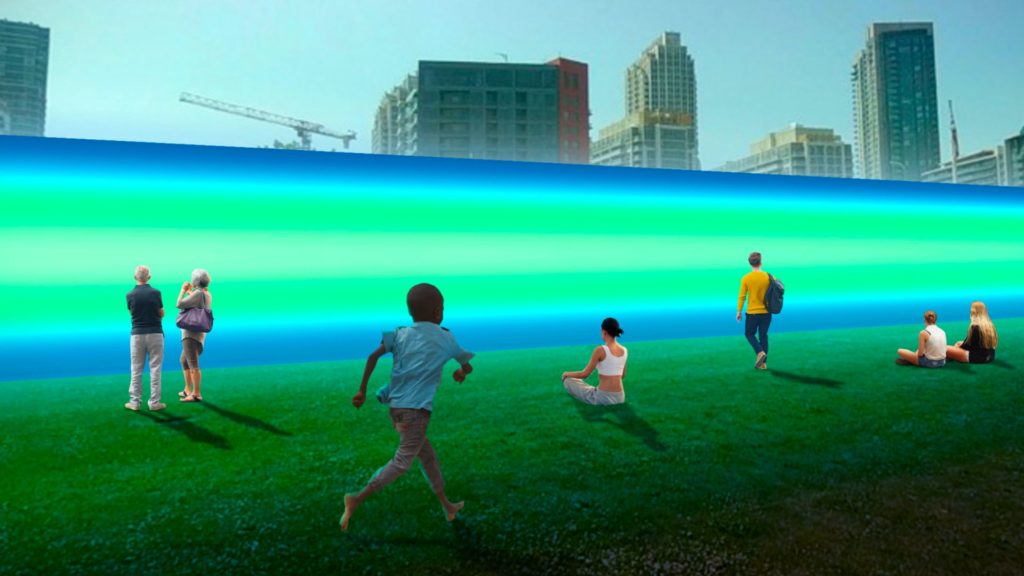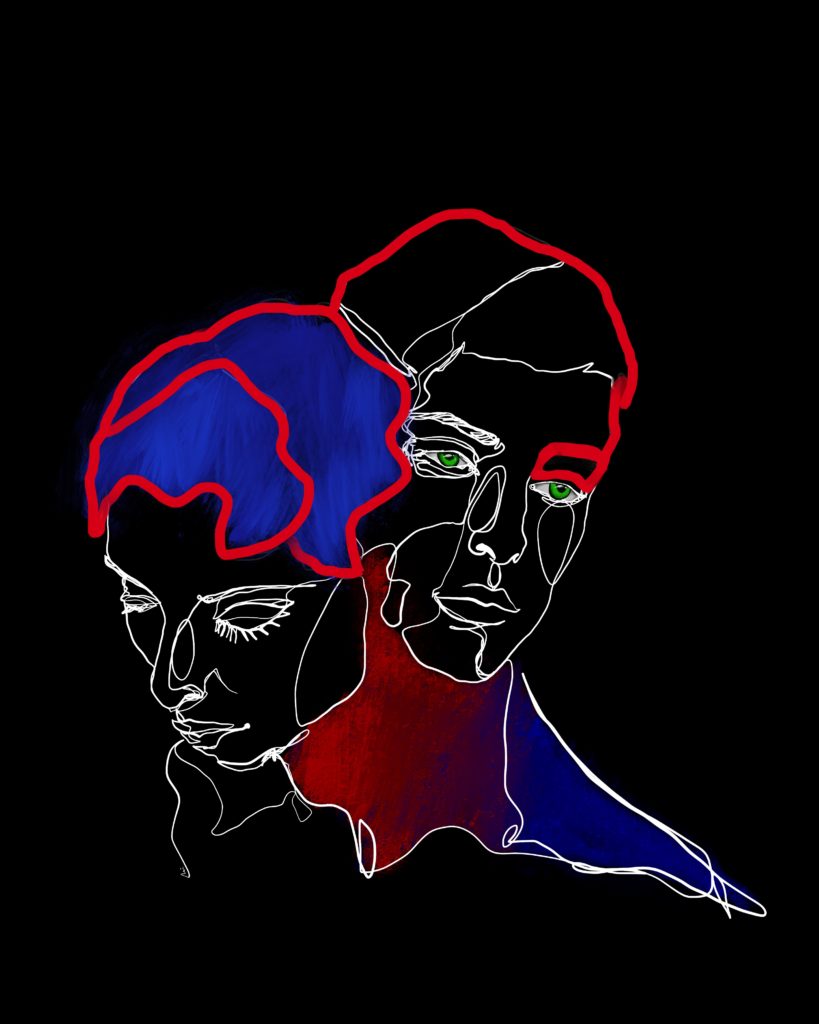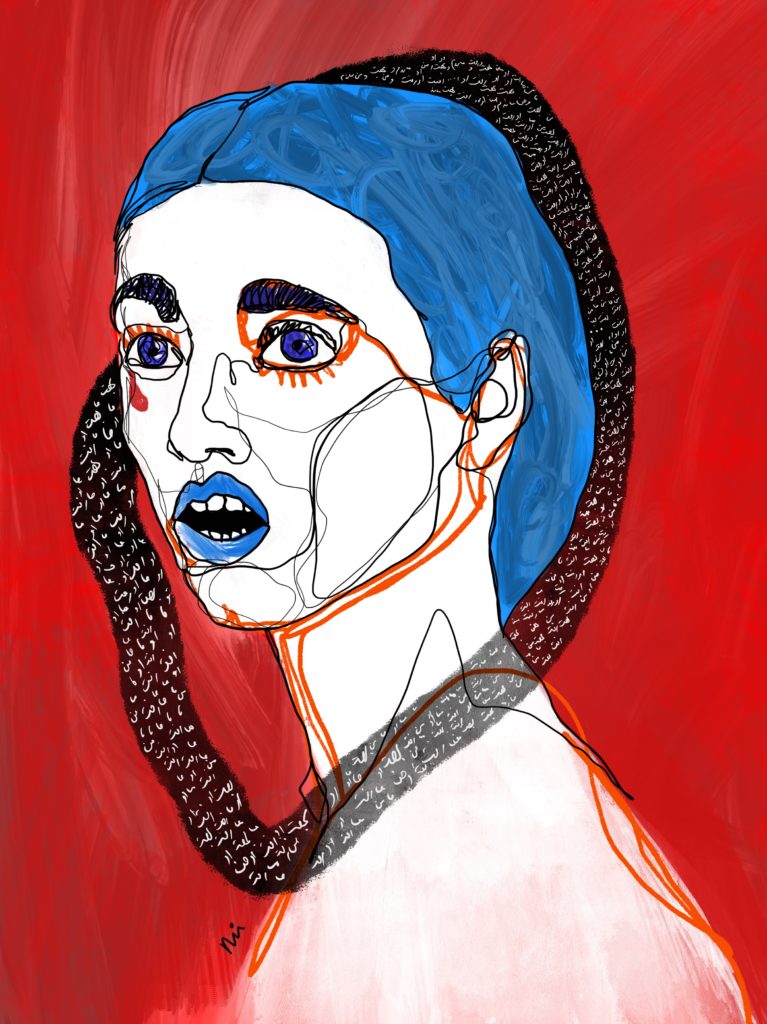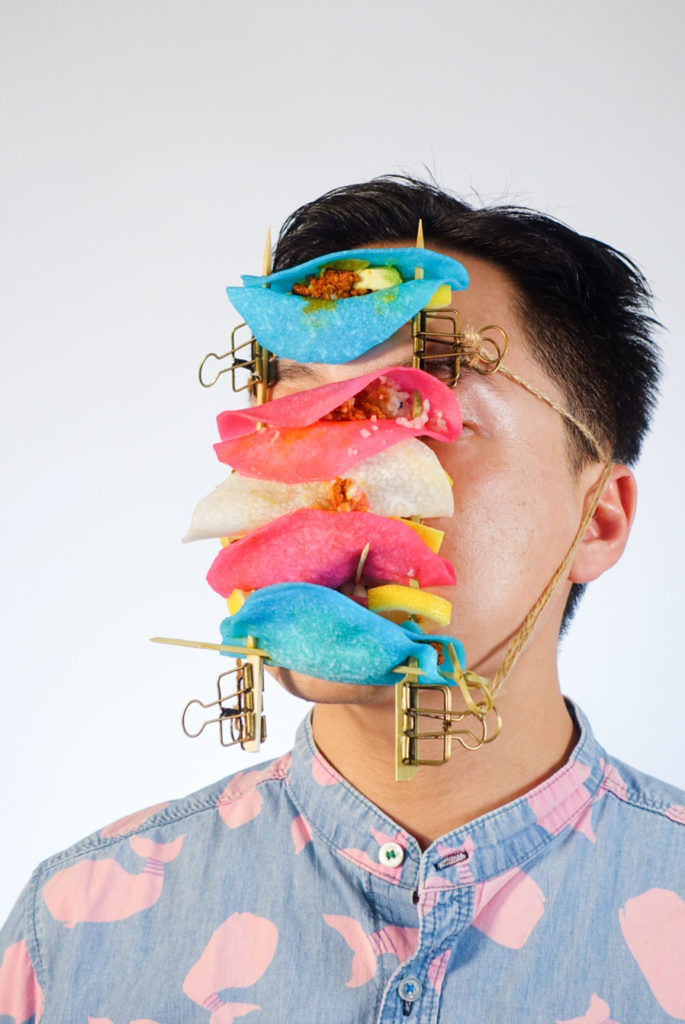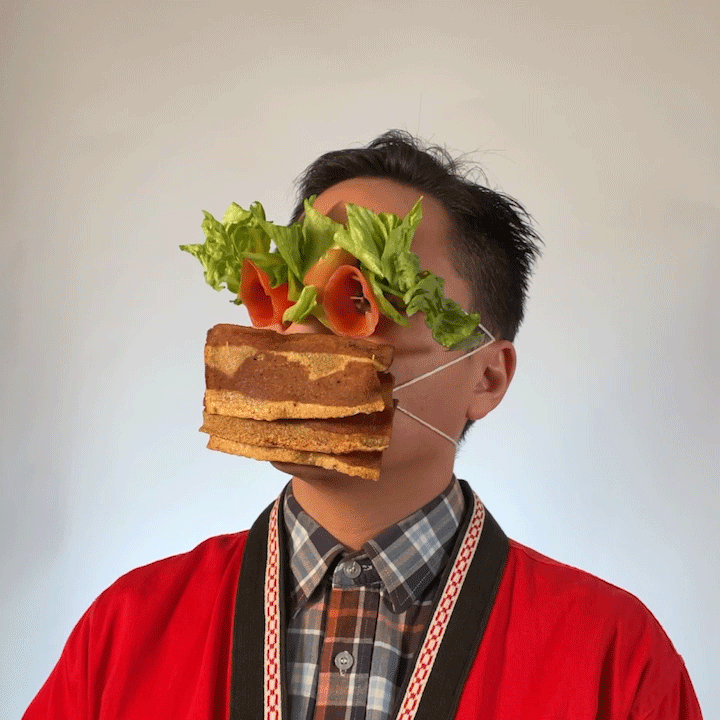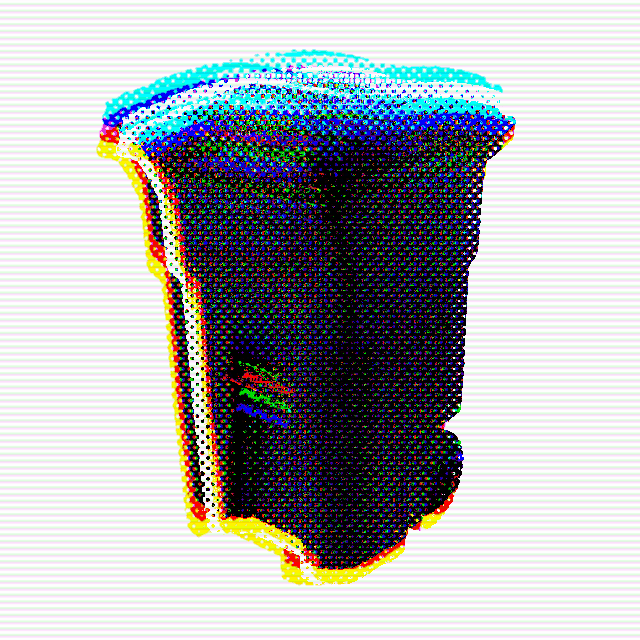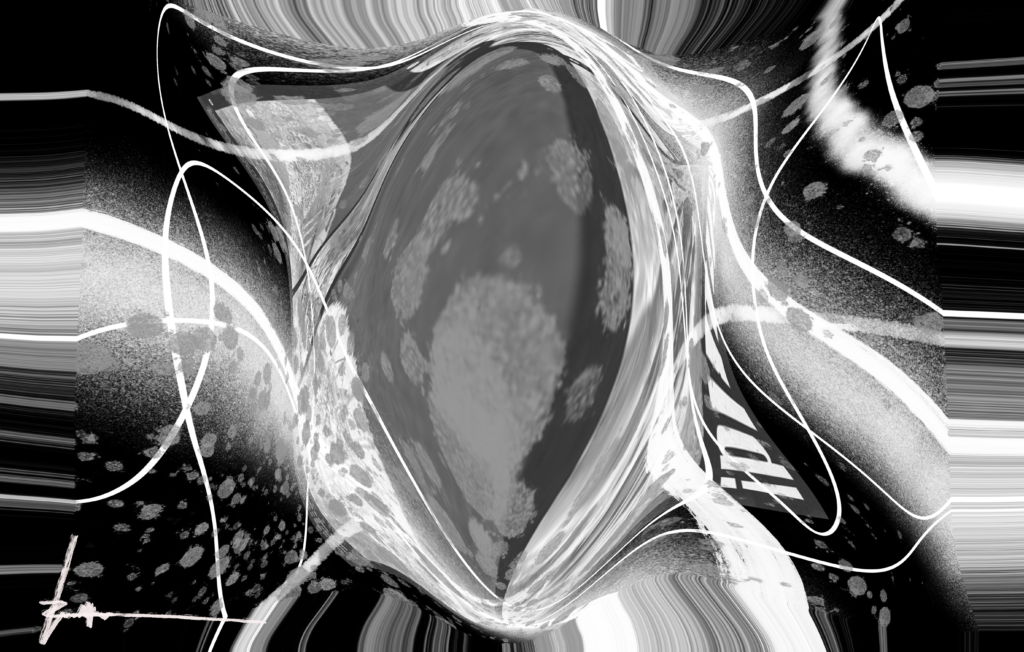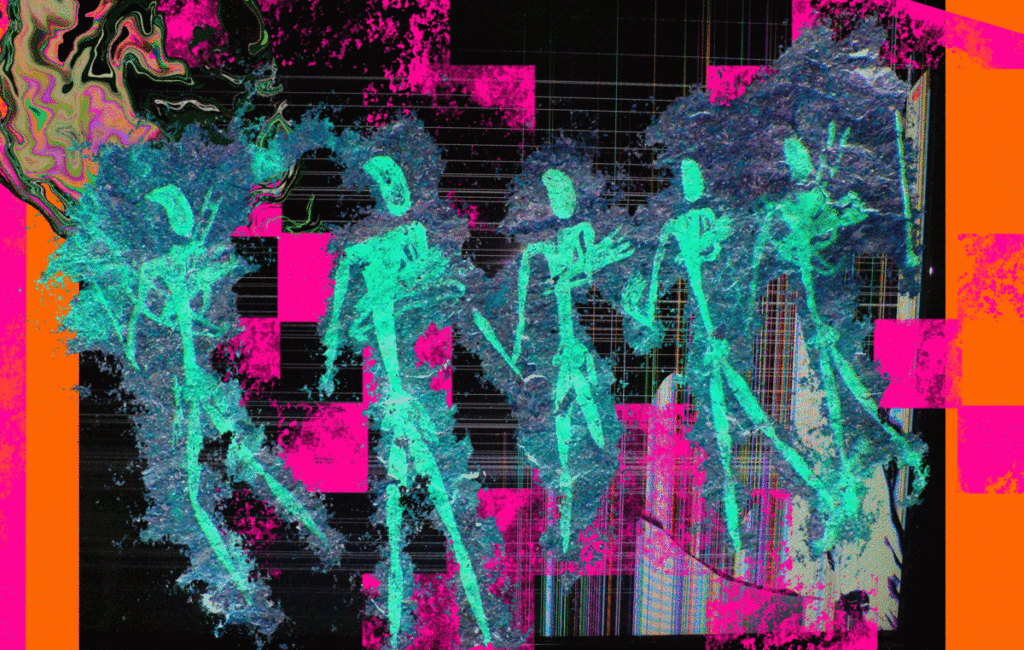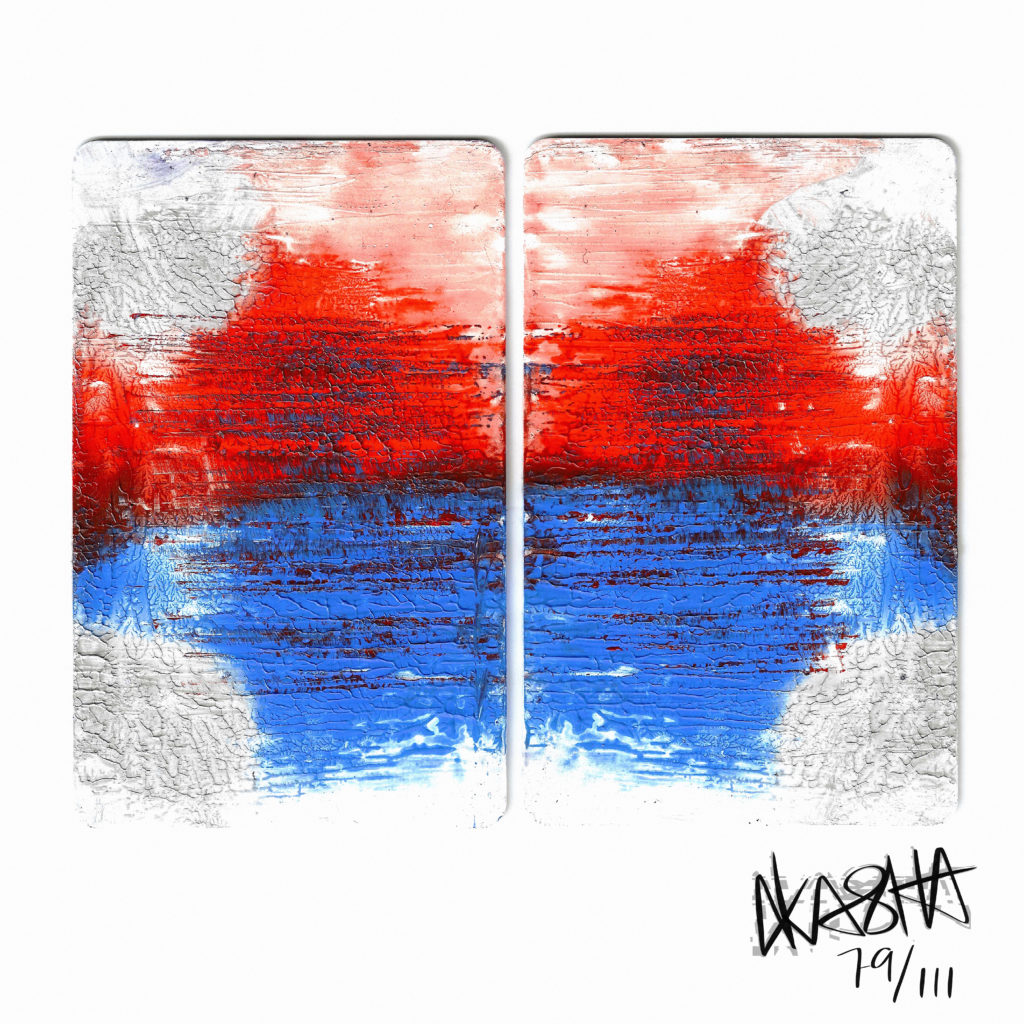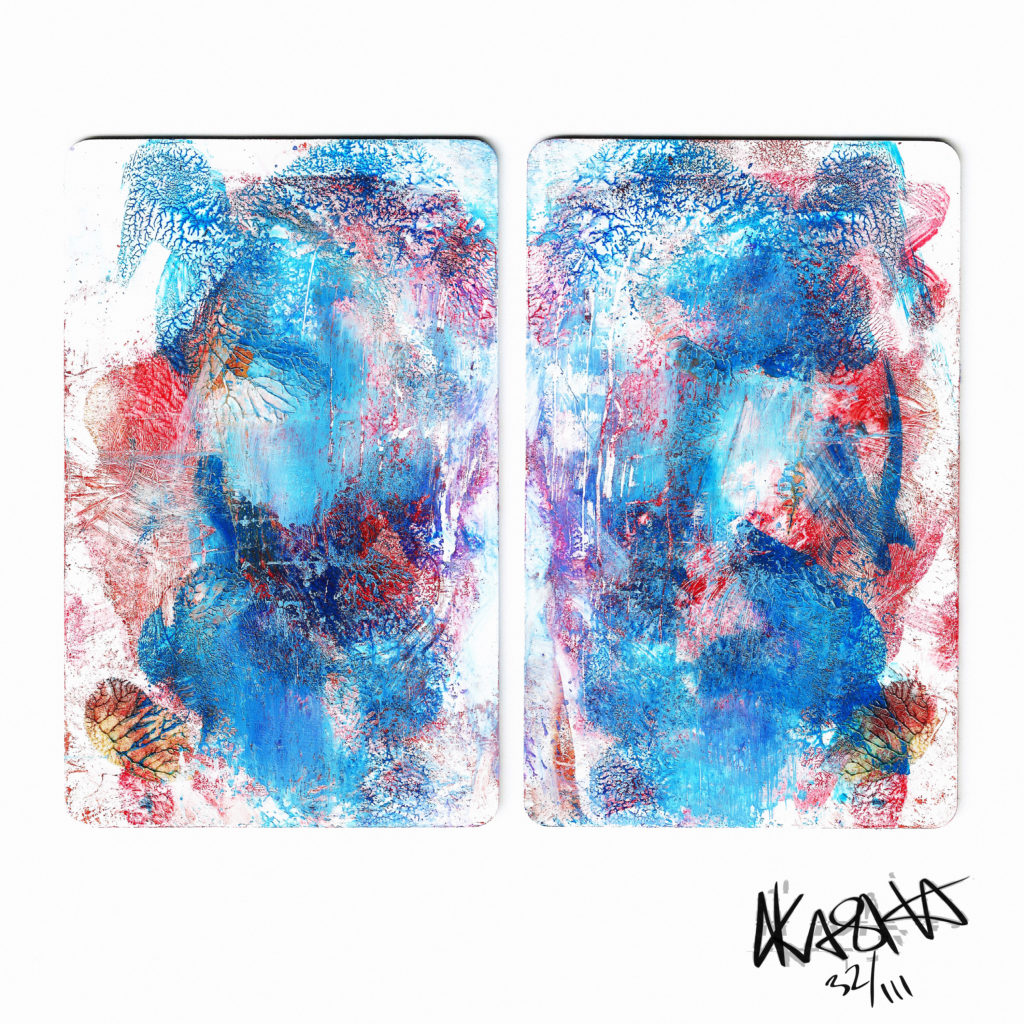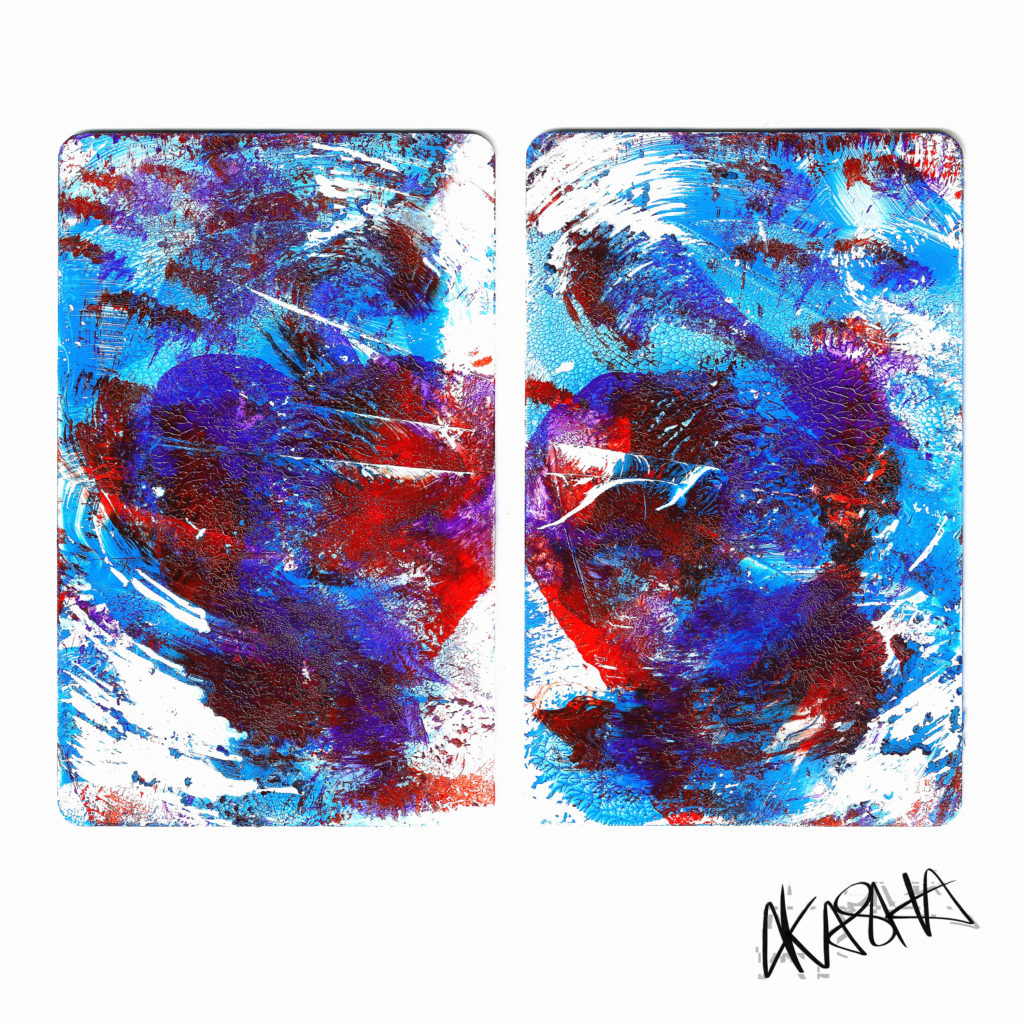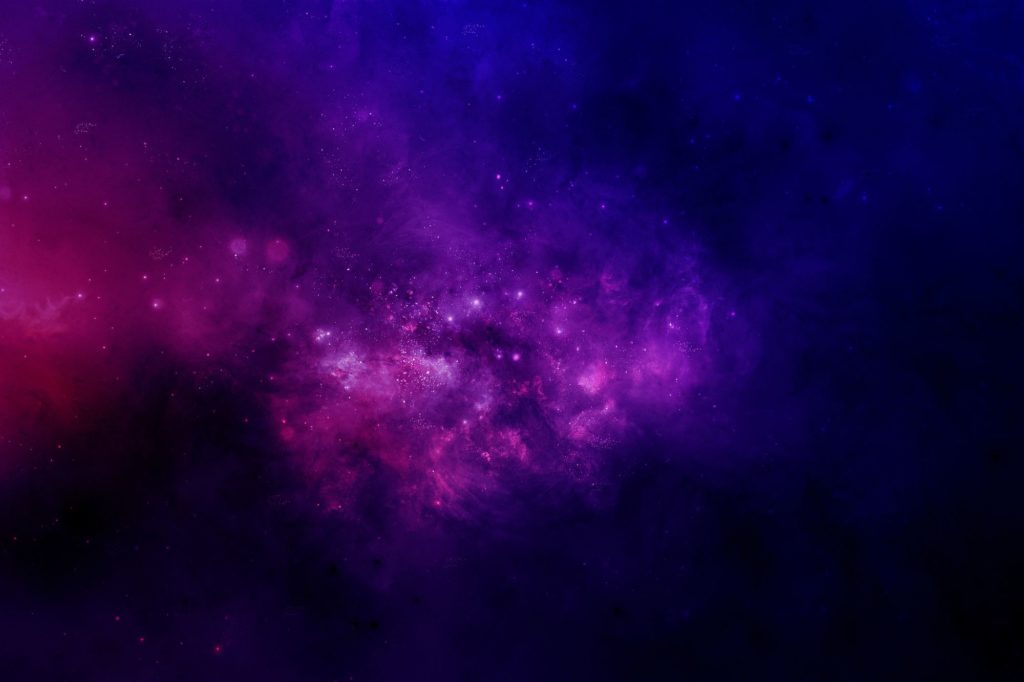David Cash: Hello everybody, welcome back NFTS.WTF. My name is David Cash editor in Chief and we’re here today with another one of my favourite artists, Mr. Wes Henry. Thank you so much for joining us live in your current hometown of Denver.
Wes Henry: That’s right.
DC: Appreciate you being here. I mean, you’re always here right now. But well, if you’re not in LA, but yeah, how are you enjoying seeing a million people drop down on your hometown right now.
WH: I mean, I think it’s this. It’s pretty insane out there with all the food trucks and stuff. But it unfortunately for everyone that came, we got dumped on with snow like 2 days ago the temperature dropped so, It’s normally nicer than this believe it or not, in the winter it’s I mean Denver is like I’m from Chicago. It’s very cold there and very not sunny for like half the year and it is sunny almost every day in Denver which that’s why I moved here.
DC: I mean, it’s still pretty nice out, I will say even with some snow on the ground it goes.
WH: the sun goes down and you need to coat if you’re not from the cold climate you need a coat.
DC: Yeah, I mean I’m still wearing a coat, I’m Canadian also for reference. But yeah, it’s not so bad, it’s pretty chill here. Yeah, but yeah, it’s really cool to see so many people descending on this space. You know this event is been going on for I think five years now, but you know a lot of the people who’ve gone before are saying, you know, it’s really interesting this year because this is the year that you know the NFT crowd is kind of come, you know, come into their own and and join this space you know, as like a legitimate you know space so.
WH: Right.
DC: You know you’re obviously an NFT artist and you’re also based in Denver. How have you found the space growing over the past? You know a little while and maybe you wanna talk about how you initially got into it.
WH: Sure, so I’m I don’t need you could. You call me like an OG in this space or brand new, depending on. How you think right? Because?
DC: Your metrics, yeah.
WH: So I essentially started, so I’ll give you kind of my back story. Then I’ll answer that where I was, so I lived in Chicago, was born and raised. But then I went off to college, came back, got a job, and built a career. I was going to be a philosopher. I majored in philosophy in college, which is a surprise to a lot of people, but I was going to be a professor and I thought you know what I think I’m gonna have a lot more fun and make a lot more money if I stay in art, so commercial art was the name of the game Adobe was you know, like, I don’t want to say just starting out, but just starting to dominate like computer art was obviously a big deal, so I learned the Adobe suite, the creative suite like Photoshop, Illustrator and all that got a job in the industry was like an art direct like a designer art director. And then all the way up to the creative director and it was a creative director for a while and. It’s a cool job for a nine-to-five job, but COVID hit. I was just not living a healthy lifestyle. It’s very stressful because it’s like that show Mad Men.
I mean, it’s I couldn’t even watch that show because it was like give me like anxiety.
DC: PTSD.
WH: Yeah, because it’s like you know, like alright we gotta come up with a $4 million idea and you got till Friday and it was like oh my god, like my heart palpitations that’s what the creative director. Does is you have to do that and then I’m standing in a room with a bunch of suits that don’t know me and I’m pitching some. You know, they have to put so much money into it for it to work, but so it’s a pressure cooker so everyone blows off steam afterwards. So everyone is like sort of an alcoholic, has drug problems like creative departments are insane. That was like the running joke is like if you want to get rid of them, just do one drug test and everyone’s fired. So it’s like. It’s a crazy place. It’s fun, but it is. I think in most places, toxic, so and you don’t really know that until you leave it and it like kind of washes or like gets out of you and you wash clean of it.
DC: Oh wait, that’s not normal behaviour, actually.
WH: Right and so once COVID hit and you kind of like, I think the world like reassessed what is important and at the beginning of it, I was just like I don’t want to do this anymore and I looked at like the top people in the industry. I’m like I don’t want to end up like that, so I just quit. I was like I have a freelance business I can make a pretty good living just on my own and I’m like I don’t care if I have to eat beans and rice. I’m going to try to make it on my own. And then I got sober, stopped drinking, smoking everything and like got fit and I was like I’m going to go back and start doing art again. So I hadn’t done art in my life since high school, essentially. Where I was an artist my whole life..
DC: Like art art.
WH: yeah like creating because I want to, not ’cause the client. Is paying me to.
DC: Not off a brief
WH: Exactly yeah so I started doing art again in procreate on an iPad and I had just had the little iPad and I would post to Instagram and see if people liked it and then Instagram just went, like way up and I opened a print shop and I was like man. Wouldn’t it be amazing if I could sell like one print a day for like 150 bucks? Wouldn’t that be an amazing life? There’s still like, you know like that’s the dream, but I had to you know just to stay afloat and pay bills and everything, do like branding projects and website design.
DC: Some freelance.
WH: Right exactly so I had a full client roster. But then, out of the blue. So I’m also a boxer, there’s a gym in Chicago that I belong to and I redid their branding this guy trained me for free for like a year and It was amazing like that’s the perfect trade deal. So I did a lot of boxing art and then I was working with the guys like we should try to do this NFT thing and I was like I don’t know what the hell you’re talking about this was like over a year ago. This was like last. A year before last November, and so I did one test which Rarible was like where it was at at the time.
DC: yeah
WH: OpenC was just like a shitshow so we like, can I swear on here I don’t know?
DC: Yeah, yeah, it’s called what the fuck
WH: so I did I minted it on rarible and it like I had like two of my like best friends were like bidding and it was like they weren’t going over like 200 bucks like this is ridiculous. Randomly, I don’t know how random it is logan Paul dm’d me on Instagram and was like hey man, I got this fight coming up with Floyd Mayweather who like I’m a giant boxing fan so I know I’ve watched every Floyd Mayweather fight where whether you love him or you hate him I’m like a giant fan of his and I’m like holy shit and he’s like I want you to do the art for the fight and do a piece and we’re going to drop an NFT. And I’m like oh my god like so like Nifty Gateway, I’m like we gotta get into this NFT thing and nifty gateway at the time was like starting to get like, explode and be like this huge platform where people were making a lot of money and I got an exclusive drop on that platform for three days which was going to be like historic. Beause it was like Logan Paul, Wes Henry. Collaboration for the Mayweather fight and the Mayweather fight was on February 20th, so they were giving us 18th, 19th and 20th to drop stuff and I was like I’ll make 3 pieces. I made them for Logan we’re like face timing like all the time and he’s like those are so fucking awesome, this is going to do so well and I’m like. This is gonna make history and I’m gonna make millions of dollars. Covid’s like nope, boom, the fight gets rescheduled and then it was like Ah OK, I have to cancel everything with.
DC: Nifty, we’ll cancel anything if they have any reason to boom, like yeah.
WH: Right, so that’s gone and I’m like, Oh my God so then I’m like alright it’s in June it’s alright it’s gonna happen. Didn’t happen again. So COVID well the fight happened, but it was still like weird. And because of all the weirdness, Logan was just like dude, I’m not going to do the drop now like.
Like a few days before I was like, oh my god Yeah, like such like I’m like damn man that ’cause that’s such a huge opportunity. So that didn’t happen. But I’m like whatever, like on to the next one like I’m just a natural-born hustler, failure is a part of my life.
DC: You live in the entertainment industry. You know one day down the next day up.
WH: Yeah, especially anyone that has like a celebrity. It’s like you do not hold your breath, no matter what, even if it’s.
DC: Right, yeah, they’re probably gonna disappoint you.
WH: They’ll break contracts and call lawyers. It’s like, so it’s a crazy world. And I was like I have to like get some drops on these platforms and get this NFT thing going ’cause I think there’s something to it and I was seeing all that like the guys that got the spots that I had for those three exclusive drops right broke records. Like Mad Dog Jones I think got either February like one of those dates…
DC: Was it February 2021?
WH: Yes.
DC: Yes, tons of crazy drops were coming out then February, March was like the heyday.
WH: It was insane, so on that same day Mad Dog Jones had a job and he did an open edition for like 7 minutes or something and made like $4 million, yeah.
DC: Of like the yeah.
WH: And I was like, Oh my God, like I would have made so much money ’cause like Logan Paul’s happens to also be like a big name in NFTS Like love him or hate him, he’s like a.
DC: YouTube guy, And he has a crazy audience anybody will like they’ll buy his stuff right so.
WH: Anyways, none of that happened. He’s still a friend of mine, but we never ended up dropping anything, so I still have like 3 in the Chamber. That’ll be sweet. One day, maybe you’ll fight with like Mike Tyson, it didn’t or something it has like have Mayweather on it so it’s just him and it’s still like viable so who the hell knows? But anyway, I’m like I got. I need to do this so I called a couple of my buddies. I’m like you gotta help me. One of my buddies. Hero machine who runs nomad, his name is Danny. He was helping me out. And he got me a job with Known Origin. I was like we have to figure it out. What NFTs are and within a week he was like alright I’m gonna figure it out and got me a call with the CEO of known origin. It was like,
DC: David?
WH: Yeah, David, who’s like a really nice cool guy, talked with him and they’re like they fully supported me. I dropped six pieces. They blew me up on all their social media. It was fantastic and I was like this is great. But I dropped way too many like they had a limit and I was like can I push it and I went well over it? And it was like, yeah?
DC: Because you saw the nifty, you know? Yeah, the nifty effect.
WH: Exactly and I just feel like apples and apples. Like no, it wasn’t the same. It went well, but it wasn’t great and I was like, on to the next one, right? That was still a success, but it wasn’t right.
DC: You did the drop this time, Yeah like OK you got the taste.
WH: I did a job it did well it and it was like great money and all this stuff and im like I need to do more so then Danny was like dude, why don’t you just start calling someone to like big names in the industry and I know Ali Sabit who’s like. I think the top earner on open C for an individual artist at this point
DC: He does really, really well on open C.
WH: He’s an animal, so I reached out to him and I was like, hey man. Do you have time to talk? I would love to just pick your brain and he was like yes, saw my artwork. He’s like, dude, I’m going to take you under my wing and show you how all this shit works and I was like ah, he’s like your talent is like undeniable and I know that you’re going to be successful and I was like finally like here we go. So he’s like, here’s how you like mint and open c and taught me like all of the things that I teach other artists now and I’m bringing them up to all came from that dude’s brain and Gabe Weiss he introduced me to. There’s also like a close friend of mine who was the other person in my ear who was like giving me advice on how to do drops so I started dropping in. I think July is like early July. I think on open c and it is from the first piece I dropped. It was just a sell-out city for like 3 months. I think my account did like $2.5 million in like 3 months. It was absolutely insane and like so in August I moved to Denver from Chicago. Like I said and that day, I did a collaboration with Sabot or it was dropping that day. So we did these three skulls that he like did his thing over, and if you collect all three of them then you get this 4th gold one and there were ten of each of those who were like 30 total. Plus you can win like the ten of that, that sold out on the drive like when I’m arriving in Denver, sold out so all of his big whale collectors and he had a lot of them, were like a feeding frenzy on my stuff. So now my account is just churning. It’s like you gotta get stuff ready to drop and I’ve been doing art since the beginning of covid so I just had a stockpile of art.
DC: Like OK?
WH: I was like I check this shit out! check this shit out! Like every and people were like this is amazing. And then I mean there was one day. The activity on my account were a bunch of whales came in and just bought a bunch of stuff. I think there were like I don’t know my it was like over 100 Eth in like 24 hours.
DC: Jesus Christ
WH: I get 10% of all of this like holy shit, And it’s right when I arrived in Denver and Denver. I’m like I’m a very outdoorsy person, so I’m like I’m going 5 fishing, I’m going mountain biking. And I had to buy all this new shit right? And I’m like I need to get this big like SV to go up in the mountains and do sweet shit, and that’s just I’m like now I don’t have to worry about money anymore like I’m good and now I dropped all my clients. I was like Nope, I’m not saying.
DC: Sorry guys.
WH: Yeah, like sorry like that’s great like and I will do branding only for select clients if they were to come, and if they’re nice and there’s no stress. And it’s not like crazy, you know. If anyone stresses me…
DC: You could do it on your schedule
WH: Yeah right, if anyone stressed me out like. Good luck, you know like hang up, that’s a luxury. That I have now, but now I get to be a full-time artist which is like my dream in life and it happened and it was all because of open C and this entire NFT thing. And it’s like, I’m every day I wake up like a child on Christmas, Christian child. I got I’m like Oh my God like this is awesome. I got to like make some cool shit and drop it and people love it and I get feedback and there are haters but like haters are you got that you? Know that you really made it yeah.
DC: People are taking time another day to talk shit
WH: Right, it should be. Yeah, but then the first that would like to bug me but Is like. Now it’s just like a block to. Leave like it’s just like yeah like leave it but it’s been holy shit been a ride and it’s still going and it’s insane and I have so much more shit coming out and I have even in the last two days. Booked more things. More collaborations. The collaborations have been like I mean I did Busta Rhymes NFT like that’s his Twitter profile picture right now. Like met him in New York and we like it. Partied all night. It was amazing like I’m a 90s kid and like I’m a hip hop head.
DC: So hanging out with Buster is hilarious
WH: That’s right. Oh my God. It was like so that. Was like, you know, a life moment and meeting him and his son and his crew and all those people and we still keep in touch is. I’m sure I’ll Be talking to his son soon, ’cause he’s trying to get like big into the NFT world and then Snoop came along and there people wanted to meet me ’cause well Buster was doing and then I did a collaboration with Snoop Dogg and then randomly Gabe’s wife sent me like a Deepak Chopra’s charity wants to do something so I did
DC: like OK.
WH: Deepak Chopra’s charity that’s like I love that dude we like meditated in Miami and then, like had sushi on a rooftop, I was like this is just a dream, so it’s like things are going well. They’re still going well and I will not, I will not like so you could ride that wave until it kind of fades. It’s just not how I operate, so like any collectors or you know fans of my work. I’m honest that this is still just the beginning and I’m just keeping momentum and keeping exposure going to get bigger and bigger and I will not stop until I’m dead like I’m not gonna let the wave go away for the rest of my life.
DC: That’s beautiful and I’m so happy for you man. I’m so happy this all worked out. And I mean you’re doing your work is amazing. You know that and like you’ve been doing it for so long, and I feel like you know, we’ve talked about this with a few of the artists that we’ve you know, talked to today. You know, people like Frankie Nines and you know a lot of people come from, you know, creative industry background, you know, like corporate, either the creative director or like a game designer or something like this. Somebody who’s like really grinded through the process done everything for like 5-10 years and then they have the, you know, the wherewithal to like just do it on their own because they’ve done everything and I feel like you’ve definitely done all of that.
WH: That is an important point because I think a lot of people were like, oh, I’ve been an artist or been creative there. You wouldn’t believe how many artists people I talked to and they’re like. I just don’t. I’m not into the whole selling thing and I’m like, well, they should pick a side, do you wanna feed yourself with the art?
DC: You’re a professional artist. I mean you sell your work.
WH: Yeah, like look, you have to. It’s not a sacrilege to talk about selling things and making money. Like do you want to be a starving artist or would you like to live well and do this time?
DC: And the fact that we can even ask ourselves that question and that NFTS can facilitate allowing ourselves. It’s huge, yeah.
WH: It’s insane like if you and then with your collectors, like if you don’t think about business, you’re neglecting everyone that buys a piece.Not that everyone is just trying to flip, but it’s like keep they spent hard-earned money to buy your stuff like don’t let it all just fall away and run away.
DC: That’s a really important point actually. ’cause like some of the conversations we’ve had today. You know, we love considering the collectors like, especially with artists ’cause there’s a big difference between you know, like marketing, uh, PFP project. Just like the brand, that’s branding. You know, that’s just like brand awareness versus marketing. You know, one of one art or limited edition art.
It’s really way more about actually having that connection to the people who buy it, or at least. Perpetuating your narrative enough so that they can get that from your social media.
From your profile, from the people you work with and why and how you work with them.
So yeah, I mean like obviously collaboration has been a big way that you kind of got into some of those collective networks. But do you have any? I don’t, I don’t know, maybe tips is the wrong word, but you have any. You know things that you do that you would say that you want to see more of in the space in terms of you know people taking care of their collectors and. Like you said, like treating it like a business long term.
WH: Well, I guess my overall advice would be before they get to the collectors, ’cause there’s a lot of young artists that they don’t have collectors yet, so that’s like a next-level problem, which is a lovely problem to have, but the first level is. I mean and I use this example. I’ve used this before.
I got a question from a guy one time that said, you know, I really want to make it in this NFT art industry.
Do you have any tips for me and like how do I do it? And I was like, let me see your work.
He said I haven’t made anything yet.
DC: So like ciao like. You already shot yourself in the foot. Before you could even begin.
WH: I’m like what the fuck Are we talking about? Like how am i supposed to?
DC: Hypothetical-like concept like.
WH: How do you sell this product and you? And you don’t even have a product?
Doesn’t exist!
WH: it was like it blew my mind but.
DC: That’s like that happens a lot, yeah?
WH: All the time and you gotta like. That’s the other thing I realized is. Like in this NFT world.
It’s such the Wild West. You got like I’ve been in the game. For a long time. And ive been at high level.
pressure situations producing dealing with millions.
DC: So that when Snoop Dogg hits you up and says hey, can you make this? And you have a week or. Something you could do it, yeah.
WH: I can close it. I can take it to the finish line and it will and it will look well and I will make sure
DC: You’re confident that you have that ability so you can…
WH: Yeah it will not be a flop like I won’t flop. Anything, yeah, but there’s these. Like some of these kids are just like this,I just Woke up like I don’t know what. The hell like they. Don’t know anything about anything like maybe have. Barely held a job down there. You have no idea where someone’s background is. So like one thing is the hype train in this industry can be really, I think, toxic were part of what people get off on is just talking about what they’re going to do or what this is going to.
DC: Gonna do doesn’t help anybody. Like what are you doing?
WH: Like what did you do right, yeah? How did you get here? So there’s so much that where I just discouraged like talking, in general, like show what you did, not tell what you’re going to do.
But a lot of those artists is like, focus on the work like that and I know in the.
DC: And they focus a lot on. I feel like you know there are all these words like a utility. Oh, we want to add up a metaverse component. We wanna add a play turn game, it’s like, well what’s the actual product?
To begin with, is it art? Is it like what is it?
WH: That’s and that’s the thing with PFPs, though it gets a little messy because like I’m about to drop a project with Jonathan Little, the poker player who I learned the other days written like.
15 Best selling poker books I was like.
DC: like OK?
WH: So I just finished the art like 3 days ago, but that project truly likes a lot of these PFPs.
It’s pure utility. I mean, we’re going to do it’s going. To blow everyone’s minds.
DC: Because it’s a utility token, though it makes sense it’s what it is
WH: The art is almost irrelevant. Yeah, but I also made it look super dope because so it’s like a custom deck of cards that you’ll like get with it and It’s gonna be insane.
DC: Yeah, it’s utilitarian, it’s a deck of cards exactly, so it’s like.
WH: And and we may or may not ’cause legally there are all kinds of red tape on the on.
DC: The record right?
WH: That like. Before tournaments, he may or may not can’t promise shit is going to like on camera. On Twitter. Pull a card out and be like, oh, look at that. That’s a eight of clubs.
If you have this card I’m going to give you 10% of what I want in this tournament if I win.
So now you’re sweating along with him like. Oh my God, I just want $5,000,000 now you’re getting cut of that down and. So there’s going. To be there’s game.
DC: A gamified kind of unlockable.
WH: Right, and that’s like 1 aspect. Then it’ll be like you know, we’ll just be like you got 3 Queens you know, and then you’re eligible to this. Then I’m gonna pull two cards and like if you got these two to bring the numbers down ’cause it’ll be, you know there’s 52 cards in the deck and I’m going to.
We’re in the two jokers which will act when there’s not multiple card combinations you can use those as fillers, you know, as a wild.and then I’ll be like if you have these two cards. You get a free NFT from me.
because they’re not.
DC: Thats dope
WH: As long as the number of people is like under 10. So essentially when we first mint, if you get one of every card, then you win every week in a weekly you win something for a year.
DC: Yeah, thats sick.
WH: And so the we’re going to give back like 65-70% of what we make back onto people.
So like it’s going to be so much utility, it’s going to blow people’s minds and we’re hoping that we’re not going to take a big cut because we’re both already established.
DC: That’s super cool.
DC: Its for your people
WH: its for our fans
DC: Right, it’s and for doing something like. You know important and cool
WH: Right? Yeah, and so I think it’s going to be a massive hit.
DC: Thats exciting
WH: And there’s 50 of each. They’ll be 2700 pieces total, so we’re announcing it next week and.
We like the websites almost done. And then we’ll be like, alright, you’ll be like you know one of those like random hints where you don’t know what it’s going to be.
DC: Right.
WH: And then there’ll be like an unveiled day. And then it’ll all go. To secondary and open c it’ll all be running the ethereum block chain
DC: And just for reference, telling when you’re when you’re watching this. This is the 18th off February, so yeah. You know, if if we’re we’re seeing this.
WH: It’s already going and yeah, I mean so anyways, that’s one of the things that’s in the works, but I guess my example long winded was that is pure utility, right? The artist less.
DC: But that’s that’s very intentional,
WH: Right exactly so its..
DC: And like you know, like like I don’t know, there’s like Mega key and all these things like those are utility tokens like. It’s a type of specific, but like it’s an art piece. You know utility is great and adding air drops and you know add it like added value are great, but you know, I think like we’re on. The same page, you know a lot of people focus on
WH: And If I was a betting man, I would say. The PFP will be old and dusty sometime.
I think it’s going to happen this year and. It’s not that it’s a stupid model, it’s that the NFT industry is like.
Time compressed, so anything that like feels older gets old in the real world. It happens in the hyper sequence and so I think there’s no way this can sustain ’cause the amount of garbage that is out there.
That’s like collect this table NFT like.
DC: And we’ll send you a table.
WH: Any Table color you want! It’s just like we’re making a community. Which is just a fucking discord channel.
DC: Out of people who love table yeah.
WH: Yeah, like table, join the table and like you.
DC: Table gang.
WH: Can take it into the metaverse and you can carry around the table.
DC: It’s and pc game or iPhone app
WH: Jump. On the table. jump off whenever you want. So like I think. A lot of that stuff is going to.
Go to bed. And like all the big projects will remain like bored APE yacht club is not fucking going anywhere like a lot of those will sustain, but I think I think the focus is going to go back on create creativity like true good creativity like when like art. Photography like hot like almost like not highbrow, but well done things that you can tell you just when.
DC: The lens of fine art has expanded ’cause now we have. All these different generative you know exactly.
WH: Generating animation like all these.
DC: They are VR so.
WH: Amazing everything yeah and and and I think. Part of this, I think, the impetus for a lot of this is when physical pieces in the home become like right now to get like a super dope framed thing.
That’s like adaptive to the pro of whatever it is you’re putting in. It is very expensive and it’s like you know you gotta wire it up and all this. So like someone’s gonna make a lot of progress on that. ’cause every single person in the industry would like to have this.
DC: Right?
WH: And it’s going to happen eventually. Then there’s little are ones that like infinite particles, or like infinite objects, like somewhat like there’s little ones that, like you can put on dust and stuff, but…
DC: Infinite objects, yeah.
WH: Once It becomes a more, you know. Thing that you can put in your house and it’s like a piece of fine art and there’s like certificate about the fication QR code situation that links to the blockchain. Like look I own this shit I think it’s gonna sink into like the average people and even the people in industry and you’re gonna you’re not gonna want some stupidass like cartoon thing that you like maybe board of Yacht Club exception there’s some exceptions but for the most part like that’s not the art you want on your wall. What are you like a little kid or something like that? It doesn’t make sense.
DC: Maybe in your kids bedroom.
WH: Right, sure, but. It’s like you’re gonna want. Maybe there’s like 3 on a cycle that.
Lasts for a few hours over the day.
DC: Exactly, and the fact that you can even do that Is already a huge elevation, right?
WH: And I think it’s going to go back to that like true like fine art. And that’s what I do.
I’m a digital fine artist and I think a lot of that and I’m finding it is slightly rare, like there’s not that many people that do that in 3D is like a whole other game and I haven’t gotten into animation or 3D at all, which, I probably will this year, but like like painting literally. Also, I do like charcoal works. I do like Zen style works on my avid meditators, so I’ll do like you know, koi fish or whatnot like and it’ll be like black ink on like it’ll emulate like Sumi E paintings type of thing that are very elegant, yeah, but.
DC: But you do it in procreate.
WH: It’s all done like sitting on my couch with an iPad, yeah at like midnight, right?
So it’s like it’s it’s a lovely luxury, but even assuming you think that’s the beauty of digital is I can replicate. I mean, if I told you that it was real, you would believe me, right like? but that perfect stroke, most people do.
DC: I honestly thought some of your work was, you know. And and and yeah.
WH: Most people do, but that one perfect stroke in, like the Zen world like I am cheating because in the Zen world that’s part of it is like your yes your mind is clear and you’re like in the moment. And that’s the perfect. Circle like for an answer, but it’s like me. I’m like bitch I get 2000 trys like.
DC: You’re like undo.
WH: Nope, Nope, like. Sure, yeah, the the beauty of that is I can get it to be visually like transcendent where you’re like, this gorgeous and like. And that’s the other thing is my style is all over the place, but i’m evolving everyday ’cause I practice. I learn like I, I’m a beginner mind mentality. Until I die again so it’s like I’m always learning. I’ll never be the expert of anything but i’m going to put in alot of hours and I’m I mean. Ultimately that’s my goal is I would like to be the best digital artist in the world like what that means in actuality. I don’t know, but getting there is the best part like that’s the dream that I’m already in.
DC: It’s if you’re gonna set a goal. I mean, why not?
WH: Why not? Like i exude confidence? And that’s because I learned early on.
DC: Because you are confident in your work creative confidence is something that like you can’t really even teach. That has to be developed, yes.
WH: And a lot of artists are not and also, I learned early on no one else knows what they’re doing, either like it was like a Ricky Gervais quote or something. It’s like when you, when you let that sink in, I mean, as a philosophy major, it was like very Socratic method of.
DC: Where you’re like? OK, sure, but that’s one opinion.
WH: Right? Like with the line of questioning you can find out like even the smartest person.
You’ve ever met, like at the base doesn’t know anything.
DC: Doesnt know anything, yeah?
WH: Like what they’re talking about. Sort of like disappears, yeah, so like don’t take anything too fucking seriously and be confident. Like bet on yourself if you’re not betting on yourself who the fuck is gonna bet on you when you truly know no one knows anything and ultimately, at the bottom of whatever stance they’re taking on any subject is based on, like assumption.
DC: Their lived experience yeah, yeah.
WH: There’s right, even like physics based on like axioms of like that’s just the way
the world works like it’s like, wait. Right? A minute what? Like when you really understand that, like. OK, so you’re kind of in charge of your own story so bet on yourself. Go all in
DC: Do your thing.
WH: Do your thing be the best at it. Like I there’s a lot of things I could do, but I know you know you ask yourself like why should someone like anyone that wants to start their own business. ’cause I think quit your fucking nine to five. Become an entrepreneur. In some sense, it doesn’t mean like.
Be a lazy piece of shit cause I think that that’s what happens a lot of times. Like I’m an entrepreneur like no, you’re not doing anything he’s like.
DC: You just go on a laptop, right?
WH: Like getting out of that world, you really it opens your eyes to all these other people that are hustling that are not in the 9 to 5.
DC: And doing really, yeah.
WH: And doing very well because and the first question that I like ask people. If they aspire to do that is like why should I pay you $1.00? Why would I pay you $1.00 to do or say or perform or whatever it is something and start there like why should one person give you one fucking dollar?
DC: Or even agree to let you work with them. I don’t know when you’re when you’re brand new like yeah.
WH: But if you can get there and say like you know what? I have a skill or something I can do where I think someone could easily give me a dollar? Well, now I bet you can find 2 people to give you a dollar and so on and so forth.
DC: Right go from there.
WH: Now you’re making a business
DC: And if you’re six years old $2.00. I mean, that’s pretty dope.
WH: a piece of candy for em’.
DC: One more thing I wanted to ask you about. I really appreciate all these answers today.
Just one more tie in from like your old work in the creative industry to what you’re doing now.
I think one thing you were talking about when you were talking about the poker project, which I saw you getting excited about, which is really interesting is about, you know, doing some of this, you know creative strategy and you know creating the body of the project and how are we going to roll this out?
There is a level of you know still marketing and business and all these things to it.
WH: 100%.
DC: And that’s a lot of what I do as well. But you know, I can see that you love that process and that’s part of your creative process as well. How do you? How do you work that into your day? And what do you think about that?
WH: So that’s another great point that I think this same kind of you know, the level of polish that you need to like close and work big deals and work with you know, partnerships with fancy people and fancy meetings and confidences. Understanding of business 101 like business one. 101 I said
101.
DC: Were used to 101’s
WH: Yeah marketing as well like that. OK, it’s all OK. They got your supply and demand.
OK, so you need your demand to be a little higher than your supply and then you want both those things to continue to grow. That’s how you grow a business now how do I get the word out? I got all
this stockpile of shit whether you’re like an inventory based product thing or services where I need to tell other people what I’m doing. That’s what marketing is like you like. Everyone should just. If you don’t know something there. Even in the NFT industry like come up with acronyms like every fucking day, we’re like no one knows what it is, but no one is going to ask and then slowly you learn it and now you incorporate it into every sentence.
DC: Right
WH :so it’s like just. Like learn learning is so important, just start at the base base level of whatever it is like. What is simple business strategy? What is simple marketing strategy?
And when you learn those things, you can build up and I have been in the game for a long time with these big clients and you and even there wouldn’t start at like a basis. It was always like.
DC: Right?
WH: High level crazy shit but when you like, boil that down. That’s where you get the fundamental understandings to build like solid brick after brick. To build a really nice foundation and get higher up, but anyone that you know, wants to learn about that. I think with marketing is, start small like,
test your products with an individual. If you’re an artist and you got like everyday. I test my girlfriend sitting next to me. On the couch and I’m. Like you know, kind of.
DC: What do you do this
WH: She’s awake like ’cause. I usually finish it that night and then I put finishing touches in the morning ’cause I like to give myself a good rest to come back and look at it fresh because it’s your baby. You’re too close to it. You can’t tell if it’s good or not.
DC: Right?
WH: But in 2 weeks, you’ll know.
DC: Oh yeah.
WH: But if you’re about to drop it, you need another opinion, so I’ll just be like are you ready? And I’ll flip around my iPad and she’ll be like. Oh okay that cool, that’s when I’m like fuck I…
Didn’t get, you know like..
DC: You know it’s not good.
WH: But then there’s there was one time I’m getting off track, but I this is my one of my favorite parts about creating art is I did as zen scape, which I put on makers place and it was like a circle and there was kind of like this world and this bond side that’s inside of it that I will do more and put them on open c. But I flipped this around and I was like. OK, ready we’re like, I don’t know what time of the day it was, but it was like night time whenever and I flip it around and she goes…And she started crying.
DC: Just like right off the bat?
WH: And she’s not. Like, uh, cry or she’s not like. You know crying everything shit And I was like, oh. She’s like I don’t know why it just like. That like just touched me and I was like holy shit!
DC: like I did it.
WH: Yeah,im on the iPad. And I could spin it around and make this thoughtful, intelligent, beautiful woman weep. Tears coming out of her face, it was like one of the greatest moments of my life.
That has nothing to do with marketing, but like…
DC: Shows how you’re finding the balance
WH: like this is going to hit like there’s my product testing or my user testing of like.
DC: It’s it’s it’s, you know we’re making stuff for humans. It sounds it’s at the very simplest aspect of it, right?
WH: And it’s like.
DC: People have to be able to relate to it.
WH: And if one person is like super excited about it, that’s a great sign. If everyone is pretty lukewarm. That’s cool, but if you get a couple spikes where someone like that, I don’t know what it is, but I love that so much and that’s the tripiest thing about art too is I’ll make like a fish and someone like I don’t even like fish, but that’s the coolest Fish I’ve ever seen in my life. I’m like I know like and I want to be like a lot of times I make something and I’m I’m like a driver and a passenger when I’m creating like being in the flow state is my favorite. Yeah, peak of like life existence is being in that moment where like thoughts are gone. I’m just in this like Creative mode and I’m going just off of instinctive. I should take a left, take a right login like choosing colors and whatnot, and then when I get done, I’m like, you know, I’m like it’s like a time warp. I’m like Jesus, the sun’s coming like.
DC: Where are we?
WH: I gotta go to bed and I’m like I look at it and I’m like holy shit and there’s honestly times where I’m like I’m so excited about what’s here I’m like and I understand why I’m not a religious person anyway but people that are religious about stuff like this because I get it where you’re like something.
Just came through me like I didn’t.
DC: Like i cant justify…
WH: Here yeah, and it’s like and it’s I think like athletes have that same thing where they’re like the best like swim performance of their life or theyre like Michael Phelps. They like broke record.
Sometimes they can’t remember it like the details of it because they were so in the moment.
That it was like instinctual. Because if you’re like thinking too much in your head, too much that like you know, as soon as you would think about being in the flow state, you jump out. And you’re not. In the flow state anymore, like but being in that state and being that passenger driver relationship is like the most fun thing and I don’t know where I was going. That other than. If that is the same for you, or you’re wondering what I’m talking about as an artist like. Just do more, practice more every single day you should be working towards this. I mean that I meet people in life and they’re like Oh my job sucks.
My life sucks and I don’t know what to do. I’m like, OK, well, let’s work on step one and they have no clue what step one is to to make a change in their life, but they’ve been bitching about it for a decade.
DC: A year
WH: I’m like what the fuck? But then you are just OK and like that’s a cathartic experience to bitch about and be like doing my job. Sucking like this sucks and home life sucks. It’s like you are scared to honestly change.
DC: Like who created that?
WH: Like just put yourself in this boat and now, but that I think the vast majority of people that’s part of it as well. And I think I heard something on this movie called Waking Life. That’s super trippy which was like rotoscope that I watched in college and I was like too into psychedelics and all that shit is in there he said like the most two… So there’s all these different like scenes and philosophers, and different artists paints over the cells of each one, and one of the scenes. This guy said the two most universal human characteristics are fear and laziness. And that’s stuck with me because it’s very cynical, right? It’s like you want to give the, but it’s like that is so fucking true and I see it in all walks of life and every I try to go away from that. Because if you just fall into ruts and that’s what happens. That’s why it’s the most universal, because when you’re scared of. Growing or scared of doing a new thing? That’s when you’re not going to make changes and then it’s very easy to just be like fuck it.
DC: With the pandemic yeah
WH: Especially nowadays it was like I got like within streaming services, so they’re updating like weekly like there’s unlimited entertainment that some of it is very high quality. And now metaverse and like. Wait till like Apple comes out with VR AR shit It’s over like going outside like, it’s going to start going away, so it’s like. You know, get out there, get. I don’t know get the fucking blood moving. That’s another side note is like a thing that I learned that is not talked about enough ’cause I know with COVID.
A lot of people like were hurt like mental health wise with like anxiety and depression things is that again to repeat fitness is more effective daily fitness regimen, whatever it is getting your heart going for like 30 minutes and I’m not a doctor. OK disclaimer, but ask any doctor this. It’s more effective than antidepressants and anti anxiety medicines. But because of fear and laziness, entire country of America.
I mean, this is the world. It’s not just America. I think most people are like nah give me the pill and
It’s like. Yo get outside like it if you have cardiovascular fitness. Do you like? Bring down your susceptible illnesses. Disease body like 5 acts. I think it is that you can like live longer and survive whatever ailment might come your way. Your probability of having problems and. You cannot have positive mental health without physical health, and I talk about that a lot and it comes out of left field. But ultimately, the point I’m just trying to make is I know there’s and I hear this in like Twitter spaces, clubhouse, whatever I mean with COVID and and even the NFT space like it brings together communities online and like there’s IRL. Like super used for like actual life like that’s hilarious, but it’s also. I think a lot of people are suffering.
Whether they’re saying it or not, and the alienation that COVID brought where you can’t leave your house. And now like it’s slowly, some people are wary like wait. How do I like interact again? And even with there’s a lot of computer phone focus things that we’ve been doing for three years and I just gotta reiterate like you cannot have sound mental health without some level of physical health. Those things completely go together and I think physical health is is at the base of that. So not some like yeah, get out there and lift weights like trying to be douchy in that way. But just like please don’t neglect yourself.
Anybody out there that’s hurting or have depression, anxiety or feeling you know, down for whatever reason like. Put your phone down, put the NFTs down for a second go, get some exercise, take a fucking walk. Take a hike. Whatever and then. see what happens. See how your problems change after that.
DC: Awesome, I mean like, you know, if you’re watching this, you should send this to anybody who’s like trying to get in as an artist ’cause we got some amazing advice here how to start out,
Wes’s story, and yeah, I think that’s a great note to end this on. I think everybody watching this, you know, take a breath, open a window, go outside for a second, yeah. And if you happen to live in denver it’s super sunny in the winter, you’re set..
WH: Hell yeah.
I love it well I so appreciate you taking the time to join us today. Yeah, this has been awesome.
It’s great to be in your hometown for a bit hanging out. And yeah again, thank you so much for doing this.
WH: Thanks, David, thank you.
DC: It’s a pleasure, pleasure and thank you also to everybody for watching. Once again, this is NFTS.WTF hanging out with one of my favorite NFT artists Wes Henry and we will see you all in the next episode. Thanks so much for watching.

